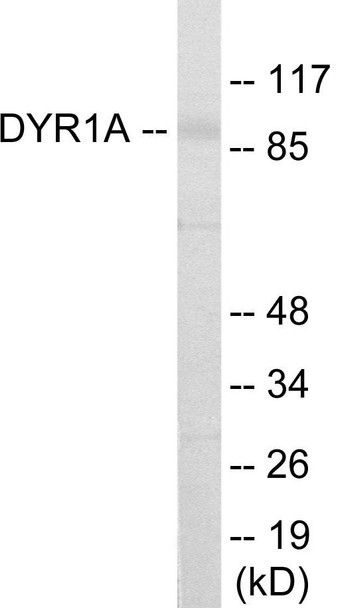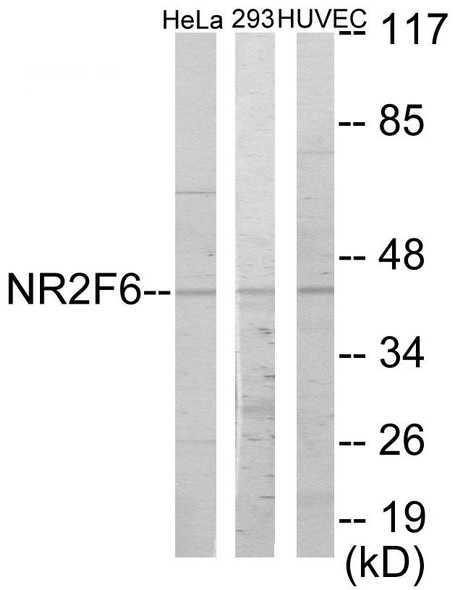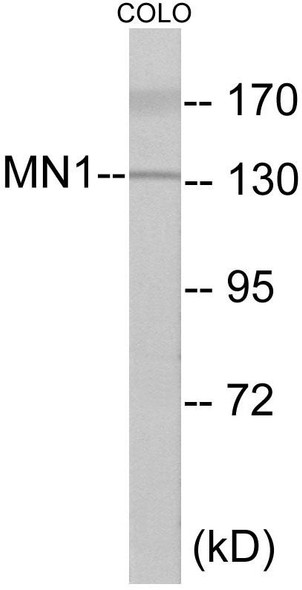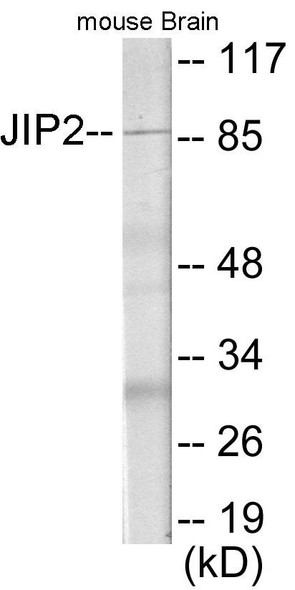DYR1A Colorimetric Cell-Based ELISA (CBCAB01092)
- SKU:
- CBCAB01092
- Product Type:
- ELISA Kit
- ELISA Type:
- Cell Based
- Research Area:
- Immunology
- Reactivity:
- Human
- Mouse
- Rat
- Detection Method:
- Colorimetric
Description
DYR1A Colorimetric Cell-Based ELISA
"DYRK1A Colorimetric Cell-Based ELISA" is a cutting-edge assay designed for the detection of DYRK1A levels in cell lysates and tissue samples. This kit offers high sensitivity and specificity, allowing for accurate and reliable measurements of DYRK1A protein levels in various samples.DYRK1A, also known as dual-specificity tyrosine-phosphorylation-regulated kinase 1A, is a key protein involved in cellular processes such as cell growth, differentiation, and apoptosis. Dysregulation of DYRK1A has been linked to developmental disorders, neurodegenerative diseases, and cancer, making it an important target for research and potential therapeutic interventions.
The "DYRK1A Colorimetric Cell-Based ELISA" kit provides researchers with a powerful tool for studying the role of DYRK1A in various biological processes and disease conditions. With its high sensitivity and ease of use, this kit is ideal for a wide range of research applications in the fields of cell biology, neuroscience, and oncology.
| Product Name: | DYR1A Colorimetric Cell-Based ELISA |
| Product Code: | CBCAB01092 |
| ELISA Type: | Cell-Based |
| Target: | DYR1A |
| Reactivity: | Human, Mouse, Rat |
| Dynamic Range: | > 5000 Cells |
| Detection Method: | Colorimetric 450 nmStorage/Stability:4°C/6 Months |
| Format: | 96-Well Microplate |
The DYR1A Colorimetric Cell-Based ELISA Kit is a convenient, lysate-free, high throughput and sensitive assay kit that can detect DYR1A protein expression profile in cells. The kit can be used for measuring the relative amounts of DYR1A in cultured cells as well as screening for the effects that various treatments, inhibitors (ie siRNA or chemicals), or activators have on DYR1A.
Qualitative determination of DYR1A concentration is achieved by an indirect ELISA format. In essence, DYR1A is captured by DYR1A-specific primary antibodies while the HRP-conjugated secondary antibodies bind the Fc region of the primary antibody. Through this binding, the HRP enzyme conjugated to the secondary antibody can catalyze a colorimetric reaction upon substrate addition. Due to the qualitative nature of the Cell-Based ELISA, multiple normalization methods are needed:
| 1. | A monoclonal antibody specific for human GAPDH is included to serve as an internal positive control in normalizing the target absorbance values. |
| 2. | Following the colorimetric measurement of HRP activity via substrate addition, the Crystal Violet whole-cell staining method may be used to determine cell density. After staining, the results can be analysed by normalizing the absorbance values to cell amounts, by which the plating difference can be adjusted. |
| Database Information: | Gene ID: 1859, UniProt ID: Q13627, OMIM: 600855, Unigene: Hs.368240 |
| Gene Symbol: | DYR1A |
| Sub Type: | None |
| UniProt Protein Function: | DYRK1A: a dual-specificity protein kinase of the DYRK family. Contains a nuclear targeting signal sequence, a protein kinase domain, a leucine zipper motif, and a highly conservative 13-consecutive-histidine repeat. May play a significant role in a pathway regulating cell proliferation and may be involved in brain development. Its gene is localized in the Down syndrome (DS) critical region of chromosome 21, and is a strong candidate gene for learning defects associated with Down syndrome. Overexpression in mice gives rise to neurological abnormalities similar to those observed in DS. Five splice-variant isoforms have been described. |
| UniProt Protein Details: | Protein type:Protein kinase, dual-specificity (non-receptor); Protein kinase, CMGC; Kinase, protein; EC 2.7.12.2; CMGC group; DYRK family; Dyrk1 subfamily Chromosomal Location of Human Ortholog: 21q22.13 Cellular Component: nuclear speck; nucleoplasm; nucleus Molecular Function:non-membrane spanning protein tyrosine kinase activity; protein binding; protein kinase activity; protein self-association; protein serine/threonine kinase activity; protein-tyrosine kinase activity; tau protein binding Biological Process: circadian rhythm; negative regulation of DNA damage response, signal transduction by p53 class mediator; nervous system development; peptidyl-threonine phosphorylation; peptidyl-tyrosine phosphorylation; protein amino acid autophosphorylation; protein amino acid phosphorylation Disease: Mental Retardation, Autosomal Dominant 7 |
| NCBI Summary: | This gene encodes a member of the Dual-specificity tyrosine phosphorylation-regulated kinase (DYRK) family. This member contains a nuclear targeting signal sequence, a protein kinase domain, a leucine zipper motif, and a highly conservative 13-consecutive-histidine repeat. It catalyzes its autophosphorylation on serine/threonine and tyrosine residues. It may play a significant role in a signaling pathway regulating cell proliferation and may be involved in brain development. This gene is a homolog of Drosophila mnb (minibrain) gene and rat Dyrk gene. It is localized in the Down syndrome critical region of chromosome 21, and is considered to be a strong candidate gene for learning defects associated with Down syndrome. Alternative splicing of this gene generates several transcript variants differing from each other either in the 5' UTR or in the 3' coding region. These variants encode at least five different isoforms. [provided by RefSeq, Jul 2008] |
| UniProt Code: | Q13627 |
| NCBI GenInfo Identifier: | 3219996 |
| NCBI Gene ID: | 1859 |
| NCBI Accession: | Q13627.2 |
| UniProt Secondary Accession: | Q13627,O60769, Q92582, Q92810, Q9UNM5, |
| UniProt Related Accession: | Q13627 |
| Molecular Weight: | 66,099 Da |
| NCBI Full Name: | Dual specificity tyrosine-phosphorylation-regulated kinase 1A |
| NCBI Synonym Full Names: | dual specificity tyrosine phosphorylation regulated kinase 1A |
| NCBI Official Symbol: | DYRK1A |
| NCBI Official Synonym Symbols: | MNB; DYRK; HP86; MNBH; MRD7; DYRK1 |
| NCBI Protein Information: | dual specificity tyrosine-phosphorylation-regulated kinase 1A |
| UniProt Protein Name: | Dual specificity tyrosine-phosphorylation-regulated kinase 1A |
| UniProt Synonym Protein Names: | Dual specificity YAK1-related kinase; HP86; Protein kinase minibrain homolog; MNBH; hMNB |
| Protein Family: | Dual specificity tyrosine-phosphorylation-regulated kinase |
| UniProt Gene Name: | DYRK1A |
| UniProt Entry Name: | DYR1A_HUMAN |
| Component | Quantity |
| 96-Well Cell Culture Clear-Bottom Microplate | 2 plates |
| 10X TBS | 24 mL |
| Quenching Buffer | 24 mL |
| Blocking Buffer | 50 mL |
| 15X Wash Buffer | 50 mL |
| Primary Antibody Diluent | 12 mL |
| 100x Anti-Phospho Target Antibody | 60 µL |
| 100x Anti-Target Antibody | 60 µL |
| Anti-GAPDH Antibody | 60 µL |
| HRP-Conjugated Anti-Rabbit IgG Antibody | 12 mL |
| HRP-Conjugated Anti-Mouse IgG Antibody | 12 mL |
| SDS Solution | 12 mL |
| Stop Solution | 24 mL |
| Ready-to-Use Substrate | 12 mL |
| Crystal Violet Solution | 12 mL |
| Adhesive Plate Seals | 2 seals |
The following materials and/or equipment are NOT provided in this kit but are necessary to successfully conduct the experiment:
- Microplate reader able to measure absorbance at 450 nm and/or 595 nm for Crystal Violet Cell Staining (Optional)
- Micropipettes with capability of measuring volumes ranging from 1 µL to 1 ml
- 37% formaldehyde (Sigma Cat# F-8775) or formaldehyde from other sources
- Squirt bottle, manifold dispenser, multichannel pipette reservoir or automated microplate washer
- Graph paper or computer software capable of generating or displaying logarithmic functions
- Absorbent papers or vacuum aspirator
- Test tubes or microfuge tubes capable of storing ≥1 ml
- Poly-L-Lysine (Sigma Cat# P4832 for suspension cells)
- Orbital shaker (optional)
- Deionized or sterile water
*Note: Protocols are specific to each batch/lot. For the correct instructions please follow the protocol included in your kit.
| Step | Procedure |
| 1. | Seed 200 µL of 20,000 adherent cells in culture medium in each well of a 96-well plate. The plates included in the kit are sterile and treated for cell culture. For suspension cells and loosely attached cells, coat the plates with 100 µL of 10 µg/ml Poly-L-Lysine (not included) to each well of a 96-well plate for 30 minutes at 37°C prior to adding cells. |
| 2. | Incubate the cells for overnight at 37°C, 5% CO2. |
| 3. | Treat the cells as desired. |
| 4. | Remove the cell culture medium and rinse with 200 µL of 1x TBS, twice. |
| 5. | Fix the cells by incubating with 100 µL of Fixing Solution for 20 minutes at room temperature. The 4% formaldehyde is used for adherent cells and 8% formaldehyde is used for suspension cells and loosely attached cells. |
| 6. | Remove the Fixing Solution and wash the plate 3 times with 200 µL 1x Wash Buffer for five minutes each time with gentle shaking on the orbital shaker. The plate can be stored at 4°C for a week. |
| 7. | Add 100 µL of Quenching Buffer and incubate for 20 minutes at room temperature. |
| 8. | Wash the plate 3 times with 1x Wash Buffer for 5 minutes each time. |
| 9. | Add 200 µL of Blocking Buffer and incubate for 1 hour at room temperature. |
| 10. | Wash 3 times with 200 µL of 1x Wash Buffer for 5 minutes each time. |
| 11. | Add 50 µL of 1x primary antibodies (Anti-DYR1A Antibody and/or Anti-GAPDH Antibody) to the corresponding wells, cover with Parafilm and incubate for 16 hours (overnight) at 4°C. If the target expression is known to be high, incubate for 2 hours at room temperature. |
| 12. | Wash 3 times with 200 µL of 1x Wash Buffer for 5 minutes each time. |
| 13. | Add 50 µL of 1x secondary antibodies (HRP-Conjugated AntiRabbit IgG Antibody or HRP-Conjugated Anti-Mouse IgG Antibody) to corresponding wells and incubate for 1.5 hours at room temperature. |
| 14. | Wash 3 times with 200 µL of 1x Wash Buffer for 5 minutes each time. |
| 15. | Add 50 µL of Ready-to-Use Substrate to each well and incubate for 30 minutes at room temperature in the dark. |
| 16. | Add 50 µL of Stop Solution to each well and read OD at 450 nm immediately using the microplate reader. |
(Additional Crystal Violet staining may be performed if desired – details of this may be found in the kit technical manual.)






